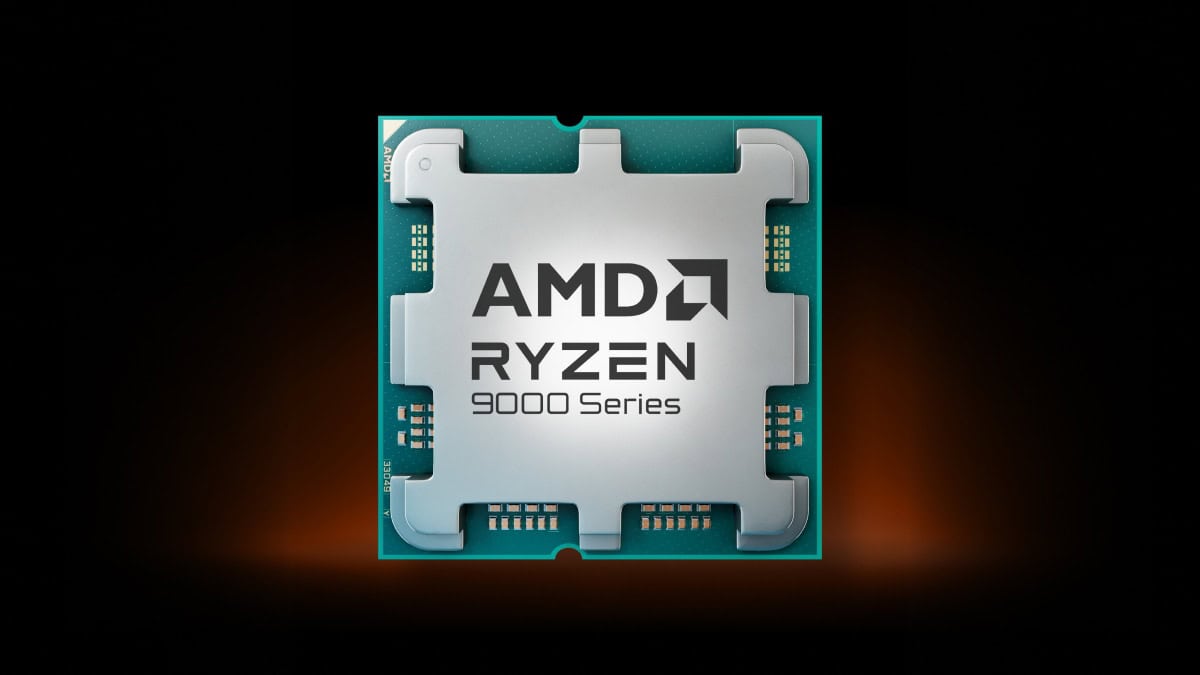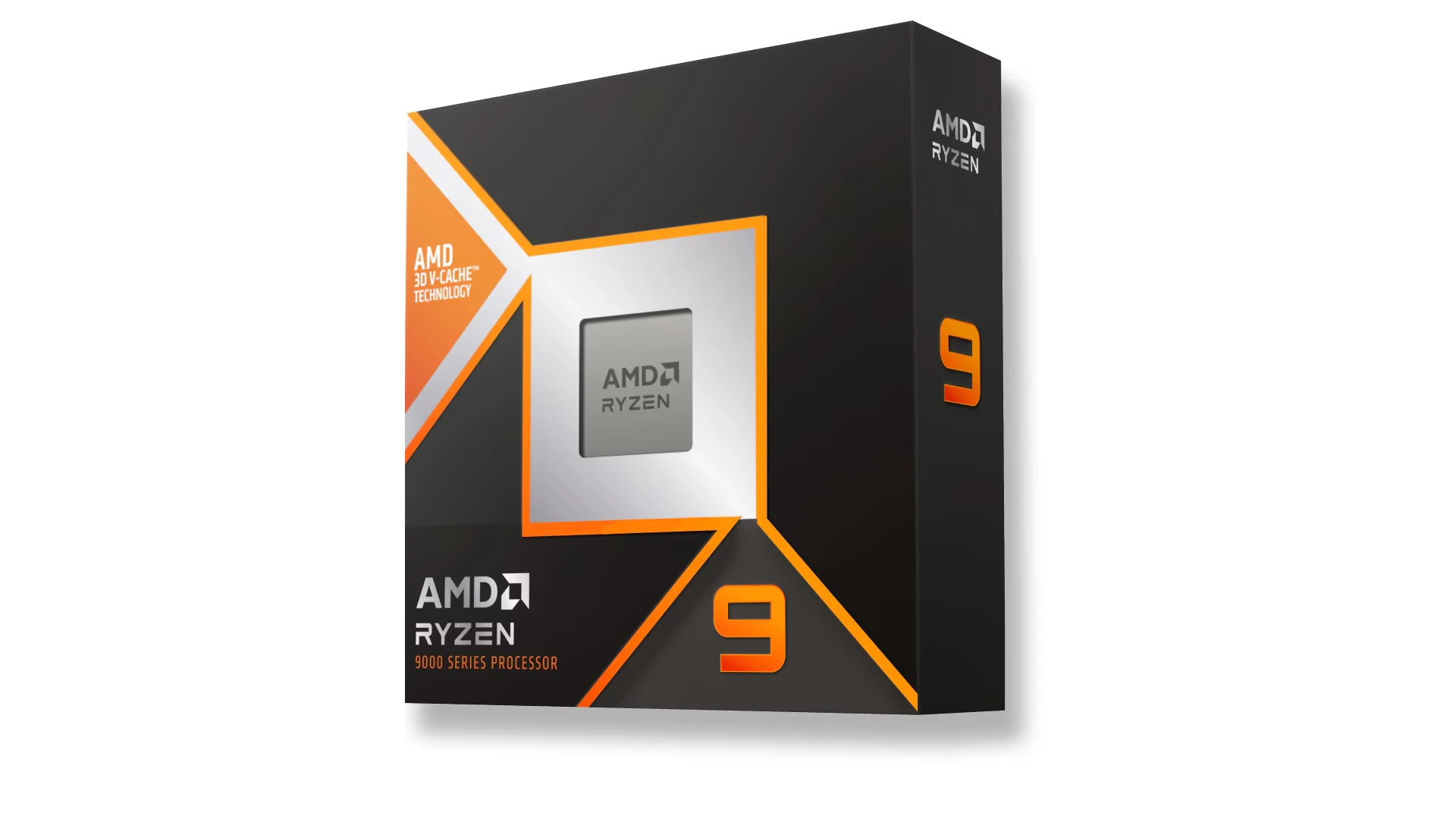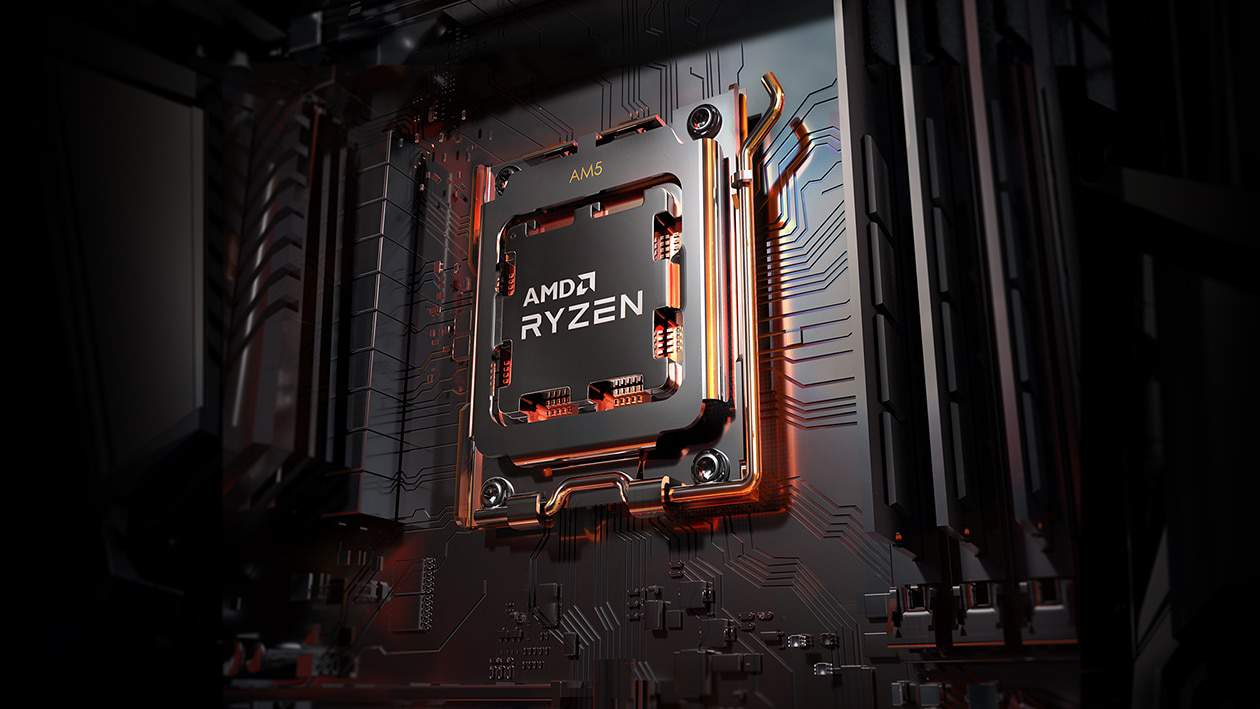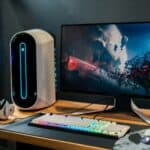AMD Ryzen processors continue to lead the market in performance, efficiency, and value across gaming, content creation, and productivity. Here’s a concise guide to the best AMD Ryzen CPUs available in August 2025, tailored to different use cases.
Top AMD Ryzen CPUs in 2025
| Rank | Model | Cores | Core | Boost | Gen |
|---|---|---|---|---|---|
| 1 | AMD Ryzen 7 9800X3D | 8 | 4.7 GHz | 5.2 GHz | Zen 5 |
| 2 | AMD Ryzen 7 7800X3D | 8 | 4.2 GHz | 5 GHz | Zen 4 |
| 3 | AMD Ryzen 5 7600X | 6 | 4.7 GHz | 5.3 GHz | Zen 4 |
| 4 | AMD Ryzen 5 9600X | 6 | 3.9 GHz | 5.4 GHz | Zen 5 |
| 5 | AMD Ryzen 7 7700X | 8 | 4.5 GHz | 5.4 GHz | Zen 4 |
| 6 | AMD Ryzen 9 9950X3D | 16 | 4.3 GHz | 5.7 GHz | Zen 5 |
| 7 | AMD Ryzen 7 9700X | 8 | 3.8 GHz | 5.5 GHz | Zen 5 |
| 8 | AMD Ryzen 5 7600 | 6 | 3.8 GHz | 5.1 GHz | Zen 4 |
| 9 | AMD Ryzen 9 7900X | 12 | 4.7 GHz | 5.6 GHz | Zen 4 |
| 10 | AMD Ryzen 9 9900X | 12 | 4.4 GHz | 5.6 GHz | Zen 5 |
1. AMD Ryzen 9 9950X3D

- Best for Gaming
- Features AMD’s cutting-edge 3D V-Cache technology, which significantly boosts gaming performance by increasing cache size.
- Delivers top-tier frame rates and smooth gameplay even in the most demanding AAA titles.
- Runs cooler and quieter compared to many competitors.
- Ideal for gamers wanting the absolute best performance on the market.
2. AMD Ryzen 9 9800X3D
- High-End Gaming and Productivity
- Also uses 3D V-Cache tech, offering excellent gaming performance.
- Excellent for users who want a balance between gaming and heavy multitasking or workstation tasks.
- Known for its efficiency and quieter operation compared to some Intel counterparts.
3. AMD Ryzen 7 7800X3D
- Best Value Gaming CPU
- Incorporates 3D V-Cache, delivering great gaming performance at a more affordable price point than the Ryzen 9 models.
- Perfect for gamers who want high frame rates without breaking the bank.
- Also performs well in streaming and content creation workloads.
4. AMD Ryzen 5 7600
- Mid-Range Performance
- Great for mainstream users and gamers on a budget.
- Solid multi-threaded performance for productivity tasks and casual gaming.
- Offers excellent power efficiency and value.
How to Choose the Right Ryzen CPU for You
- Gaming Focus: Choose Ryzen 9 9950X3D or Ryzen 9 9800X3D for unmatched gaming speeds with 3D V-Cache technology.
- Value Gaming & Streaming: Ryzen 7 7800X3D balances price and performance well.
- Productivity & Everyday Use: Ryzen 5 7600 or Ryzen 7 models without 3D V-Cache offer excellent multi-core performance for creative workflows and general use.
- Workstation Needs: Consider Ryzen Threadripper or Ryzen 9 models with higher core counts if you do heavy video editing, 3D rendering, or software development.

Summary
AMD’s Ryzen lineup in 2025 continues to impress with advanced features like 3D V-Cache, delivering superior gaming performance and strong productivity capabilities. Whether you’re a gamer, creator, or general user, there’s a Ryzen CPU tailored to your needs and budget.
A Look Back At The AMD Ryzen 5 3500
The AMD Ryzen 5 3500 is a desktop processor that was released as part of AMD’s third-generation Ryzen lineup. With 6 cores and 6 threads, it offers solid performance for everyday computing tasks and light gaming. While this CPU is now considered older technology compared to newer Ryzen generations, it still provides decent performance when paired with a good graphics card.
The processor features a base clock speed of 3.6 GHz and can boost up to 4.1 GHz when needed. Unlike some other Ryzen processors, the 3500 doesn’t include simultaneous multithreading (SMT), which means it has the same number of threads as cores. This limits its multitasking capabilities compared to SMT-enabled alternatives.
For those building a budget PC in 2025, the Ryzen 5 3500 represents an older but still functional option. It supports DDR4 memory and fits into AM4 socket motherboards, making it compatible with a wide range of system configurations. The processor works well for retro gaming, including emulation of older consoles like the Xbox 360.
Key Takeaways
- The Ryzen 5 3500 features 6 cores at 3.6 GHz base clock and 4.1 GHz boost clock for decent everyday performance.
- This CPU lacks simultaneous multithreading, limiting its multitasking potential compared to other Ryzen processors.
- It remains compatible with AM4 socket motherboards and DDR4 memory, providing flexibility for budget system builders.
Overview of the AMD Ryzen 5 3500
The AMD Ryzen 5 3500 is a 6-core desktop processor released under AMD’s third-generation Ryzen lineup. Built on the Zen 2 architecture, this processor offers solid performance for mainstream computing and gaming at a more accessible price point than its higher-end siblings.
Architecture and Performance
The Ryzen 5 3500 is built on AMD’s Zen 2 architecture using a 7nm manufacturing process. It features 6 cores without simultaneous multithreading (SMT), meaning it has 6 threads total. The processor comes with a base clock speed of 3.6 GHz and can boost up to 4.1 GHz under demanding workloads.
One notable specification is its cache configuration. The Ryzen 5 3500 includes a substantial 19MB total cache (3MB L2 + 16MB L3), which helps with data access speeds and overall system responsiveness.
For memory support, the processor works with DDR4 memory at speeds up to 3200MHz. This provides good bandwidth for most computing tasks and games.
The processor uses the AM4 socket, making it compatible with a wide range of motherboards, though a BIOS update might be required for some older boards.
Comparative Analysis with Ryzen 5 3600
When compared to its sibling, the Ryzen 5 3600, the 3500 has some key differences. The most significant distinction is that the Ryzen 5 3600 features SMT technology, providing 12 threads versus the 3500’s 6 threads. This gives the 3600 an advantage in heavily threaded applications like video editing and 3D rendering.
Both processors share the same 6-core design and similar clock speeds. The 3600 has a base clock of 3.6 GHz and boost of 4.2 GHz, slightly higher than the 3500’s 4.1 GHz boost.
The cache configuration is also different. While the 3500 has 19MB of total cache, the 3600 offers a larger 35MB total cache, enhancing its performance in data-intensive tasks.
For gaming and everyday computing, the performance gap between these two processors is relatively small. However, for multitasking and productivity work, the additional threads on the 3600 provide a noticeable benefit.
Technical Specifications
The AMD Ryzen 5 3500 is a six-core desktop processor built on AMD’s Zen 2 architecture. It offers a balance of performance and power efficiency with moderate gaming and productivity capabilities.
Core and Thread Count
The Ryzen 5 3500 features 6 cores and 6 threads. Unlike some other Ryzen processors, it does not include SMT (Simultaneous Multi-Threading) technology, which means each core handles one thread rather than two.
This core configuration positions the 3500 as a mid-range CPU suitable for gaming and general computing tasks. The absence of additional threads via SMT may limit multi-tasking performance compared to similarly priced CPUs with 6 cores/12 threads.
The processor is built on AMD’s 7nm manufacturing process with the Zen 2 architecture, providing improved instructions per clock (IPC) over previous generations.
Clock Speeds and Overclocking Potential
The Ryzen 5 3500 has a base clock of 3.6 GHz and can boost up to 4.1 GHz under optimal conditions. These clock speeds provide good performance for most applications and games.
The processor features 19MB of total cache (16MB L3 + 3MB L2), which helps improve performance by storing frequently accessed data closer to the processing cores.
While not marketed specifically as an overclocking chip, the 3500 may offer some headroom for manual frequency adjustments with proper cooling. Results will vary based on the specific chip and motherboard quality.
The processor supports DDR4 memory with a specification of 3200MHz, allowing for reasonably fast memory configurations.
Thermal Design Power (TDP)
The Ryzen 5 3500 has a 65W TDP (Thermal Design Power), indicating moderate power consumption. This makes it suitable for systems with standard cooling solutions.
The relatively efficient power profile means it generates less heat than higher-end processors, making it compatible with smaller form factor builds or systems with limited cooling capacity.
AMD includes a Wraith Stealth cooler with the processor, which is adequate for stock performance but may be limiting for extended high-load operations or overclocking attempts.
The AM4 socket compatibility ensures this CPU works with a wide range of motherboards, though BIOS updates might be required for some older boards.
Compatibility and Integration
The AMD Ryzen 5 3500 processor offers solid compatibility with a range of motherboards and cooling solutions. Understanding these integration options helps users build systems that maximize the chip’s performance while maintaining stability.
Motherboard Chipsets and PCIe 4.0 Support
The Ryzen 5 3500 works with several AMD motherboard chipsets, primarily through the AM4 socket. B450 motherboards provide an excellent budget-friendly option for this processor, offering good performance for users with tight budgets under ₹5500 (approximately $75).
Higher-end X570 motherboards like the MSI MEG X570 Godlike also support the Ryzen 5 3500, as confirmed by MSI’s BIOS updates. These premium boards offer more features but at a higher cost.
One important limitation to note is that while X570 motherboards support PCIe 4.0, the Ryzen 5 3500 itself doesn’t enable this functionality. The processor is limited to PCIe 3.0 speeds, so users won’t benefit from the faster data transfer rates of PCIe 4.0 devices.
Cooling Solutions
The Ryzen 5 3500 ships with the Wraith Stealth cooler in most retail packages. This stock cooler provides adequate cooling for normal operations and light workloads.
For users planning to run more demanding applications or considering light overclocking, aftermarket air coolers offer improved thermal performance at reasonable prices. These solutions help maintain optimal temperatures during extended heavy usage.
Liquid cooling isn’t typically necessary for the Ryzen 5 3500 unless the system will operate in particularly warm environments or inside cases with limited airflow. The processor’s modest 65W TDP makes it relatively easy to cool compared to higher-end CPUs.
Compatible mounting options include standard AM4 brackets, making the processor compatible with most cooling solutions designed for AMD’s modern desktop platform.
Frequently Asked Questions
The Ryzen 5 3500 is a mid-range processor from AMD that has sparked many questions among PC builders. This processor has specific features, performance capabilities, and compatibility requirements that users should understand before making a purchase decision.
What are the specifications of the Ryzen 5 3500 processor?
The AMD Ryzen 5 3500 features 6 cores without multi-threading, meaning it has 6 threads total. It runs at a base clock of 3.6 GHz with boost capabilities up to 4.1 GHz.
The processor is built on AMD’s 7nm Zen 2 architecture. It includes 16MB of L3 cache and supports PCIe 4.0 technology.
The Ryzen 5 3500 has a TDP (Thermal Design Power) of 65W, making it relatively power-efficient for its performance class.
How does the Ryzen 5 3500 compare to its Intel counterparts in terms of performance?
The Ryzen 5 3500 competes primarily with Intel’s Core i5 processors from the 9th and 10th generations. In multi-core workloads, the Ryzen chip often performs well against similarly priced Intel options.
For single-threaded tasks, Intel processors may have a slight edge. However, the Ryzen 5 3500 offers better value in multi-threaded applications like content creation and certain productivity tasks.
The lack of SMT (Simultaneous Multi-Threading) makes it less powerful than its Ryzen 5 3600 sibling, which features 12 threads.
What benchmarks are available for the Ryzen 5 3500 CPU?
In gaming benchmarks, the Ryzen 5 3500 typically delivers solid 1080p performance when paired with a mid-range graphics card. It handles most modern games without becoming a bottleneck.
Productivity benchmarks show the processor performing well in applications like video editing and 3D rendering, though not as strong as models with more threads.
Synthetic benchmarks like Cinebench and Geekbench show the 3500 scoring competitively in its price bracket, especially in multi-core tests.
What is the price point of the Ryzen 5 3500 processor in the current market?
The Ryzen 5 3500 was primarily released as an OEM processor for system builders like Dell and HP, as indicated in the search results. This limited its retail availability in many markets.
When available through retail channels, its pricing typically positioned it between the Ryzen 3 and higher-end Ryzen 5 models. The exact price varies by region and availability.
Due to its OEM nature, finding new retail units can be challenging, and prices may vary significantly from the original launch price.
Which motherboards are compatible with the Ryzen 5 3500 CPU?
The Ryzen 5 3500 is compatible with AM4 socket motherboards. B450, X470, and X570 chipsets work well with this processor.
Some older A320 and B350 motherboards may require a BIOS update before they can support the 3500. The MSI B450M Pro-VDH Max mentioned in the search results is one compatible option.
For the best experience, pairing the CPU with a B450 or better motherboard is recommended to take advantage of its capabilities.
Can the Ryzen 5 3500 processor handle gaming requirements effectively?
The Ryzen 5 3500 can handle most modern games at 1080p resolution with medium to high settings when paired with an appropriate graphics card. Its 6 cores provide good gaming performance for most titles.
CPU-intensive games may show some limitations compared to processors with more threads. Games that benefit from multi-threading might not perform optimally on this processor.
Temperature management is important for gaming performance. As mentioned in the search results, monitoring CPU and GPU temperatures during gaming sessions is recommended to ensure optimal performance.







